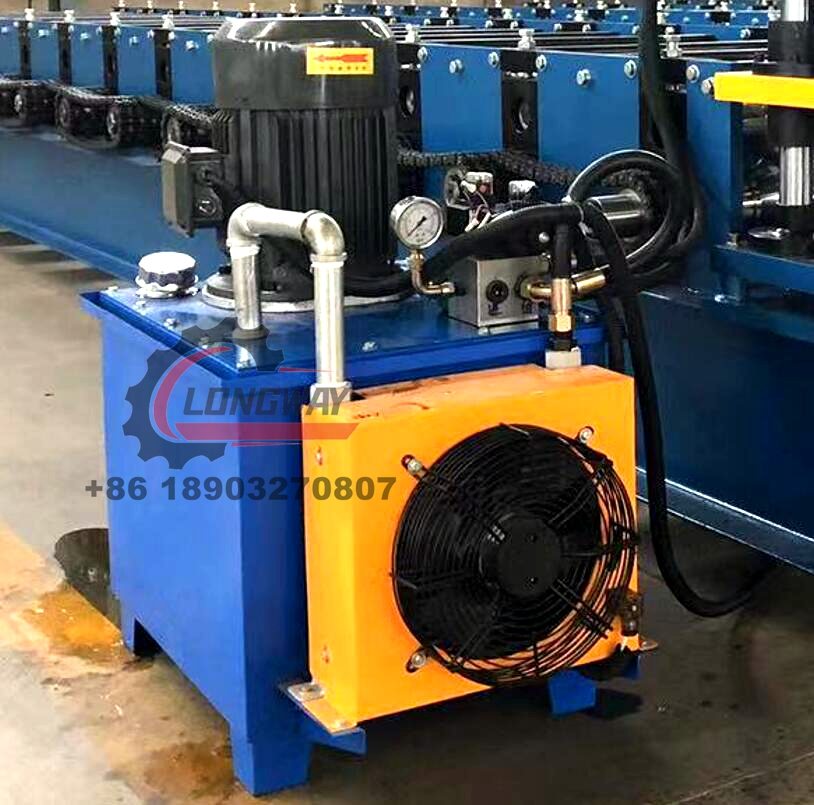steel keel cold roll forming machine
The Steel Keel Cold Roll Forming Machine An Overview
In the realm of modern manufacturing, efficiency, precision, and durability are paramount. One of the most innovative machines to emerge in the metalworking industry is the steel keel cold roll forming machine. This sophisticated equipment is critical in producing steel keels used in various structural applications, particularly in the construction and manufacturing sectors.
Understanding Cold Roll Forming
Cold roll forming is a process that involves the continuous bending of metal sheets into desired shapes at room temperature. This method is distinct from traditional metalworking techniques that often require heating the material. By using cold roll forming, manufacturers can achieve superior strength and finish, as well as maintain tighter tolerances. The technique provides several advantages, including reduced material waste, improved production speed, and lower energy consumption.
The Role of Steel Keel Cold Roll Forming Machines
Steel keels are essential components in numerous building frameworks, typified by their application in wall and roof support systems. Steel keel cold roll forming machines are specifically designed to fabricate these components efficiently. These machines typically feature advanced automation technology, allowing for seamless transitions between different profiles and sizes with minimal downtime.
The production line begins with feeding a coil of steel into the machine. Inside, the material is shaped by a series of rollers, which progressively bend the metal into precise configurations. The keels produced can vary in depth, width, and thickness, catering to the diverse requirements of construction projects.
Key Advantages of Steel Keel Cold Roll Forming Machines
1. Speed and Efficiency One of the primary benefits of using a steel keel cold roll forming machine is its capacity to produce large volumes in a short period. The continuous nature of the rolling process minimizes production lead times, making it ideal for high-demand projects.
steel keel cold roll forming machine

2. Precision Engineering These machines are engineered for accuracy, ensuring that each piece produced meets stringent quality standards. The automated nature of the equipment reduces the chance of human error and allows for consistent quality across all products.
3. Material Utilization Cold roll forming optimizes material usage. Since the process bends the metal rather than cutting it, less scrap is generated, leading to cost savings and environmental benefits.
4. Flexibility Modern steel keel cold roll forming machines can be easily adjusted to produce various profiles. This versatility allows manufacturers to respond swiftly to market changes or specific customer requests without needing extensive retooling.
5. Durability and Strength Products made using the cold roll forming process exhibit increased structural integrity. The process enhances the metal's yield strength, making the steel keels robust and capable of supporting significant loads without deformation.
Applications in the Construction Industry
The versatility of steel keels manufactured using cold roll forming machines finds extensive applications in the construction industry. These components are essential in various structures, including residential homes, commercial buildings, and industrial facilities. They are commonly used in the creation of ceilings, wall frames, trusses, and support beams. The ability to produce lightweight yet strong components makes them particularly desirable in modern construction, where space and material efficiency are often at a premium.
Conclusion
In summary, steel keel cold roll forming machines represent a significant advancement in metal fabrication technology. They offer manufacturers a competitive edge by combining speed, precision, and versatility in producing critical structural components. As the construction industry continues to evolve, the utilization of such innovative machinery will undoubtedly play a pivotal role in meeting the increasing demands for durable and efficient building materials. By embracing these advanced technologies, manufacturers can ensure they remain at the forefront of the industry, ready to tackle the challenges of today's construction landscape.
-
Roof Panel Machines: Buying Guide, Types, and PricingNewsJul.04, 2025
-
Purlin Machines: Types, Features, and Pricing GuideNewsJul.04, 2025
-
Metal Embossing Machines: Types, Applications, and Buying GuideNewsJul.04, 2025
-
Gutter Machines: Features, Types, and Cost BreakdownNewsJul.04, 2025
-
Cut to Length Line: Overview, Equipment, and Buying GuideNewsJul.04, 2025
-
Auto Stacker: Features, Applications, and Cost BreakdownNewsJul.04, 2025
-
Top Drywall Profile Machine Models for SaleNewsJun.05, 2025








